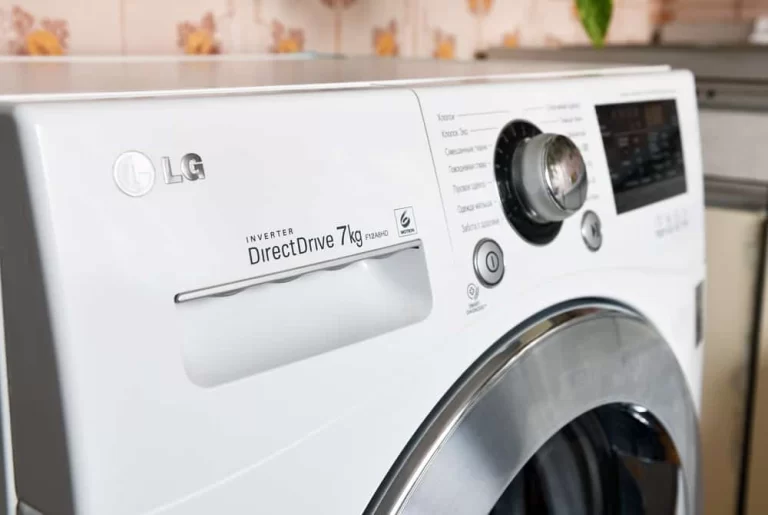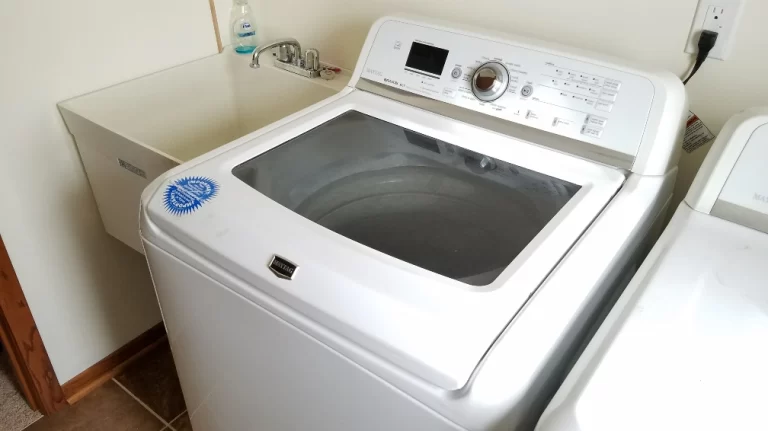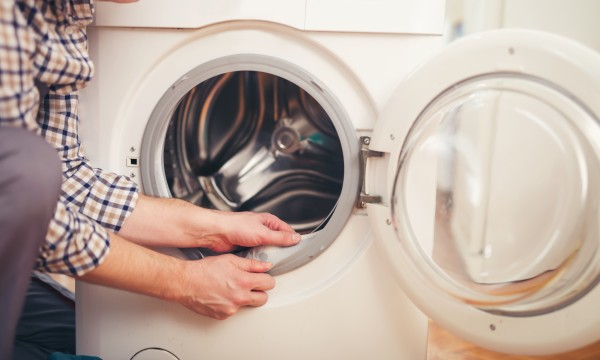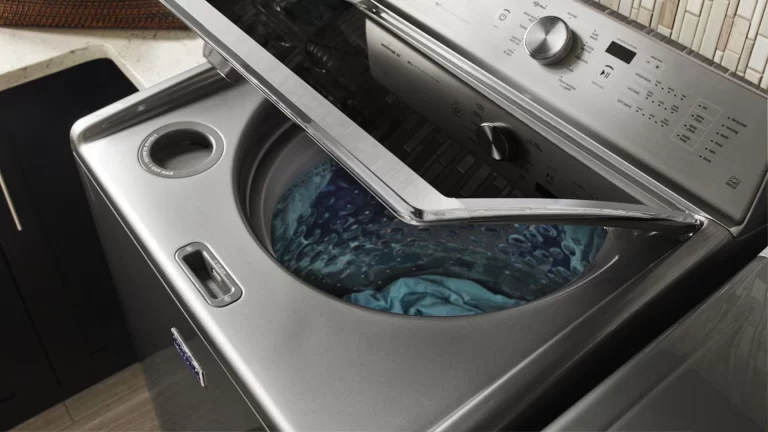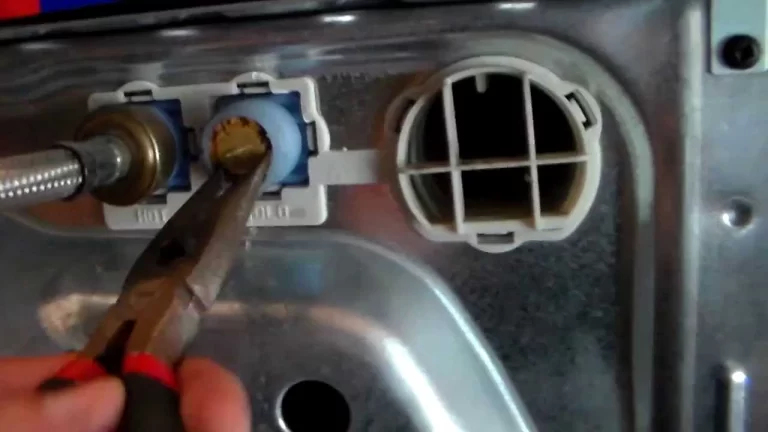Stumbling upon an Amana washer not filling with water can be a daunting hiccup in your day-to-day routine. It’s a common issue that many homeowners face, causing frustration and hindering the smooth operation of your household chores. But worry not! In this comprehensive guide, we’ll unravel the reasons behind this dilemma and provide step-by-step solutions to get your machine up and running again.
Your Amana washer not filling with water could be due to several reasons, including a closed water supply, kinked hoses, a clogged filter, or malfunctioning components like the water inlet valve or level switch. Each issue can be fixed through specific troubleshooting steps, but professional assistance might be necessary.
Quick Troubleshooting Guide:
| Issue | Symptoms | Fix |
| Closed Water Supply | Washer not filling at all | Open both hot and cold water supply valves fully |
| Kinked or Blocked Supply Hoses | Low water input, washer not filling fully | Straighten kinked hoses, clear blockages |
| Low Water Pressure | Slow water input, washer taking longer to fill | Contact a plumber to assess and resolve water pressure issues |
| Clogged Filters | Washer not filling or slow water input | Clean or replace filters |
| Faulty Water Inlet Valve | Washer not filling at all or filling slowly | Check valve for continuity, replace if necessary |
| Faulty Water Level Switch | Washer not filling, or overfilling | Test and replace water level switch if needed |
| Timer Control Problems | Washer not filling at appropriate cycle times | Check and replace timer control if necessary |
| Frozen Supply Hoses | Washer not filling in cold conditions | Thaw hoses, consider insulating hoses or relocating washer |
| Blocked Screen in Water Inlet Valve | Washer not filling or filling slowly | Clean or replace the inlet valve screen |
| Faulty Load Size Selector | Incorrect water levels for selected load size | Change selector level, replace selector switch if needed |
| Delayed Start Feature Activated | Washer not filling immediately after being started | Check controls and disable delayed start feature if necessary |
| Faulty Temperature Selector Switch | Washer not filling or filling with the wrong temperature water | Change temperature setting, replace temperature selector switch if necessary |
Understanding the Basics of Your Amana Washer
An Amana washing machine, like any other, operates through a series of coordinated actions. The machine fills with water, agitates the laundry with the detergent, drains the dirty water, rinses the clothes, drains again, and then spins to remove as much water as possible. Each stage is crucial for effective cleaning, but without water, the process comes to a halt.
Identifying Common Amana Washer Problems and Solving Amana Washer Water Issues

Before you begin, remember that safety is paramount. Unplug your washer and turn off the water supply before starting any repair work. Here’s a step-by-step guide:
1. Closed Water Supply: The proper functioning of your Amana washer depends on a steady and reliable water supply. This supply can be hampered if the faucets connected to the washing machine are turned off or if there’s any obstruction in the hoses, leading to water flow restriction.
Fix:
- Locate the water supply valves, typically situated behind the washing machine.
- Ensure both hot and cold water valves are fully opened.
- Check if the washer is now filling with water.
2. Kinked or Blocked Supply Hoses: Your Amana washer relies on two supply hoses for its water source, one for cold water and one for hot water. These hoses are designed to transport water from your home’s plumbing into the washing machine. Over time, these hoses can become kinked, similar to a garden hose, which prevents water from flowing efficiently.
Furthermore, the inside of the hoses can become blocked with sediment or mineral build-up, particularly in areas with hard water. Both kinks and blockages can restrict the water flow to your washing machine, preventing it from filling with the necessary amount of water for an optimal wash cycle.
Fix:
- Unplug the washing machine and turn off the water supply.
- Disconnect the hoses from the washer and from the water supply valves.
- Check for any kinks and straighten the hose if any are found.
- Look for any blockages inside the hoses. If any are found, use a long brush or a straightened wire hanger to remove them.
- Reconnect the hoses and turn on the water supply.
3. Low Water Pressure: Water pressure is a crucial aspect when it comes to the proper operation of your Amana washer. The washing machine needs a certain level of water pressure to fill the drum in a timely and efficient manner. However, if your home’s water supply is suffering from low pressure, this could hinder the washer’s ability to fill correctly.
Low water pressure can be caused by various issues, such as problems with the municipal water supply, a partially closed supply valve, or even plumbing issues within your home. This results in the washer taking longer than usual to fill or, in extreme cases, not filling at all, disrupting the washing cycle and the overall effectiveness of the wash.
Fix:
Check the water pressure in your home by turning on all faucets.
If the pressure is low throughout the house, you might need to contact a plumber to resolve the issue.
4. Clogged Filters: Your Amana washer comes equipped with filters at the inlet hose connections, which prevent debris and sediment from entering the machine. Over time, these filters can become clogged, particularly if you live in an area with hard water. This blockage can restrict water flow, preventing the drum from filling up.
Fix:
- Disconnect the washing machine from the power supply and turn off the water supply.
- Locate the filters, usually at the point where the water supply hoses connect to the washer.
- Clean the filters thoroughly, removing any debris.
- Reattach the hoses, turn the water supply back on, and plug in the washing machine.
5. Faulty Water Inlet Valve: The water level switch plays a key role in the washing cycle. It’s tasked with determining when the drum has reached the correct water level, signaling the control board to halt water inflow. If this switch malfunctions, it may prematurely signal the control board that the correct water level has been reached, preventing further water inflow.
Fix:
- Disconnect the washing machine from the power supply and turn off the water supply.
- Locate the water inlet valve. You may need to open the back panel of your washer to access it.
- Using a multimeter, test the valve for continuity. If it doesn’t have continuity, it’s faulty and needs replacement.
- If you’re not comfortable with this process, it’s recommended to seek professional help.
6. Frozen Supply Hoses: In colder conditions, the water supply hoses of your Amana washer may freeze. This is particularly common if the washing machine is located in a cold part of your home or exposed to freezing temperatures. Frozen hoses effectively block the flow of water, preventing the washer from filling.
Fix:
- Step 1: Identify the supply hoses, which are usually located at the back of the washing machine.
- Step 2: Using a hairdryer on a low setting, gently thaw the frozen section of the hoses. Be careful not to overheat any part of the washer or hoses.
- Step 3: Once the hoses are thawed, try running a wash cycle to see if water fills the drum.
- Step 4: If freezing is a recurrent issue, consider insulating the hoses or moving the washer to a warmer location.
7. Blocked Screen in the Water Inlet Valve: Your Amana washer’s water inlet valve features a screen that filters out sediment and other particles from your water supply. Over time, this screen can accumulate debris and become blocked, preventing the water from entering the washer.
Fix:
- Step 1: Unplug the washer and turn off the water supply.
- Step 2: Locate the water inlet valve, usually found where the water supply hoses connect to the washer.
- Step 3: Disconnect the supply hoses from the washer, exposing the inlet valve. You’ll find the screen inside the valve.
- Step 4: Carefully remove any visible debris from the screen. If it’s heavily clogged, you might need to replace it.
- Step 5: Reconnect everything and turn the water supply back on. Test the washer to see if the issue is resolved.
8. Faulty Load Size Selector: The load size selector on your Amana washer allows you to choose the water level for different load sizes. If it’s faulty or set incorrectly, it can prevent the machine from filling with the right amount of water.
Fix:
- Step 1: Try setting the load size selector to a different level and see if the washer fills with water.
- Step 2: If changing the load size doesn’t help, the selector switch may be faulty. In such cases, you’ll need to replace the switch. If you’re comfortable doing so, you can order a replacement part and install it yourself. Otherwise, seek professional help.
9. Delayed Start Feature Activated: Your Amana washer may have a delayed start feature, which allows you to set the washer to start at a later time. If this feature is activated, the washer won’t fill with water immediately.
Fix:
- Step 1: Check your washer’s controls to see if the delayed start feature is on.
- Step 2: If it is, turn off the feature following your washer’s manual.
- Step 3: Try starting a wash cycle again to see if the washer begins filling with water.
10. Faulty Temperature Selector Switch: The temperature selector switch in your Amana washer allows you to choose between cold, warm, and hot washes. If it’s faulty, it may prevent water from flowing into the machine.
Fix:
- Step 1: Try setting the temperature selector to a different setting and see if that changes anything.
- Step 2: If the machine still isn’t filling with water, the temperature selector switch may be defective and needs replacement. You can replace this part yourself if you’re comfortable doing so, or hire a professional for the job.
When to Seek Professional Washer Repair
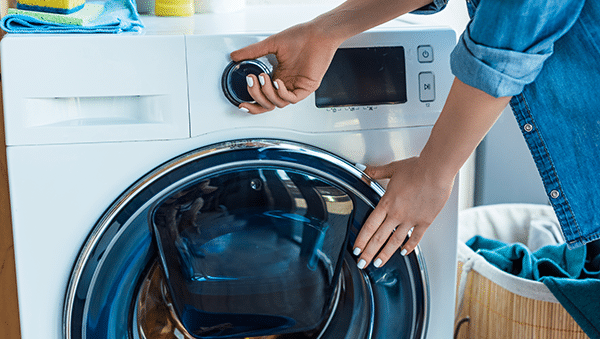
Although DIY repairs can save money, they can also lead to further damage if not done correctly. If your washer still isn’t working after going through the steps above, or if you’re uncomfortable performing these tests yourself, it’s time to call a professional. They have the tools and expertise to handle more complex repairs safely and effectively.
Preventive Measures: Amana Washer Maintenance Tips
Prevention is often better than cure. Here are some tips to prevent future issues:
- Regular Maintenance: Clean your washer’s drum and filters regularly to avoid build-up that can lead to problems.
- Right Detergents: Always use HE (High Efficiency) detergent in the recommended amounts to avoid excess suds that can clog your machine.
- Load Sizes: Overloading your washer can put undue stress on its components. Stick to recommended load sizes for optimal performance.
- Regular Professional Inspections: Having your washer inspected by a professional yearly can help catch minor issues before they become major problems.
FAQs
How can I prevent my Amana washer from not filling with water in the future?
Regular maintenance, such as checking and cleaning the filters and hoses, ensuring a steady water pressure, and proper use of detergents can help prevent this issue.
My Amana washer takes a long time to fill with water. What could be the problem?
This could be due to low water pressure, a partially closed water valve, a kinked or blocked supply hose, or a malfunctioning water inlet valve.
Can a faulty timer control cause my Amana washer to not fill with water?
Yes, a faulty timer control can disrupt various aspects of the wash cycle, including water intake. If it’s not sending the right signals at the right time, it may prevent your washer from filling with water.
What should I do if I have checked everything and my Amana washer is still not filling with water?
If you’ve gone through all the troubleshooting steps and the problem persists, it’s recommended to seek help from a professional. They have the tools and expertise to handle more complex issues safely and efficiently.
Is it safe to do these fixes on my own, or should I always hire a professional?
While many of these fixes can be safely performed at home, always prioritize safety. If you are not comfortable performing these steps or the issue seems complex, it’s best to hire a professional. Never attempt to disassemble your washer or work with electrical parts if you’re unsure.
Conclusion
In conclusion, dealing with an Amana washer not filling with water can be quite a hassle. However, armed with the right knowledge and a systematic approach, you can effectively diagnose and fix the problem. Remember, if the problem persists after these steps, it’s best to seek professional help to prevent further damage. With consistent care and proper maintenance, your Amana washer can provide you with years of reliable service.

